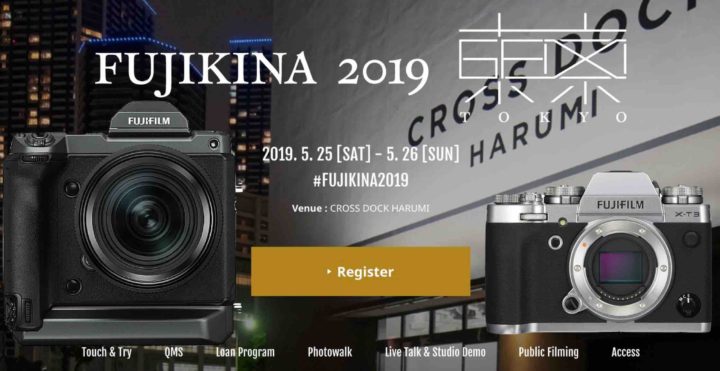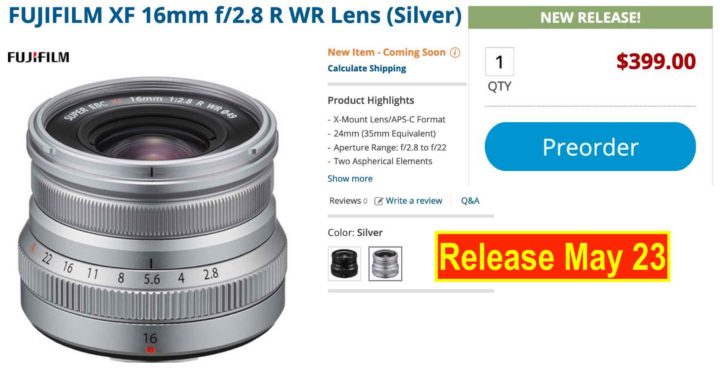Fujikina 2019 Tokyo, May 25/26: Fujifilm GFX 100 Launch Party and More?

Fujikina 2019
Fujifilm announced the Fujikina 2019 event in Tokyo on May 25/26.
In the Fujifilm world, “Fujikina” means “big launch event“, and in this case it will be the official launch party for the Fujifilm GFX100, which will be announced on May 23.
What else could come?
Besides the release of the silver Fujinon XF16mmf2.8, I have not heard any more details about the event.
The Fujifilm X-Pro3 is sure for 2019, but no source has so far told me, that it will come in May (but never say never).
If you are waiting for the Fujinon XF 16-80mm f4 and GF50mm f/3.5, Fujifilm said they will be released in fall.
Whatever comes, you only have to do one thing: follow FujiRumors to know everything as fast as possible ;).
GFX · X fan meeting “FUJIKINA” is again.
This time, Tokyo’s event space “CROSS DOCK HARUMI” in Harumi will be held, and an event “FUJIKINA 2019 Tokyo” will be held to thoroughly enjoy the GFX X series.
In this event, you can experience the latest models of GFX and X series, talk shows and studio demonstrations by top photographers and creators from inside and outside Japan, gallery exhibition, free quick maintenance service (by reservation only) and GFX and X series. We offer various contents such as free rental service (by reservation only).In addition, “FUJIKINA 2019 Tokyo” is planning to make a public program to create promotional videos and photos of overseas artists using the GFX / X series as a new program. Don’t miss the chance to see and experience the top professional production sites.
At the Fujikina 2019 there will be touch & try, quick maintenance service, loan Program, photowalks, live talk & studio demos and public filming. You can check out the full program at the dedicated fujikina 2019 page.
Follow FujiRumors on Facebook, Youtube, Instagram, RSS-feed and Twitter


